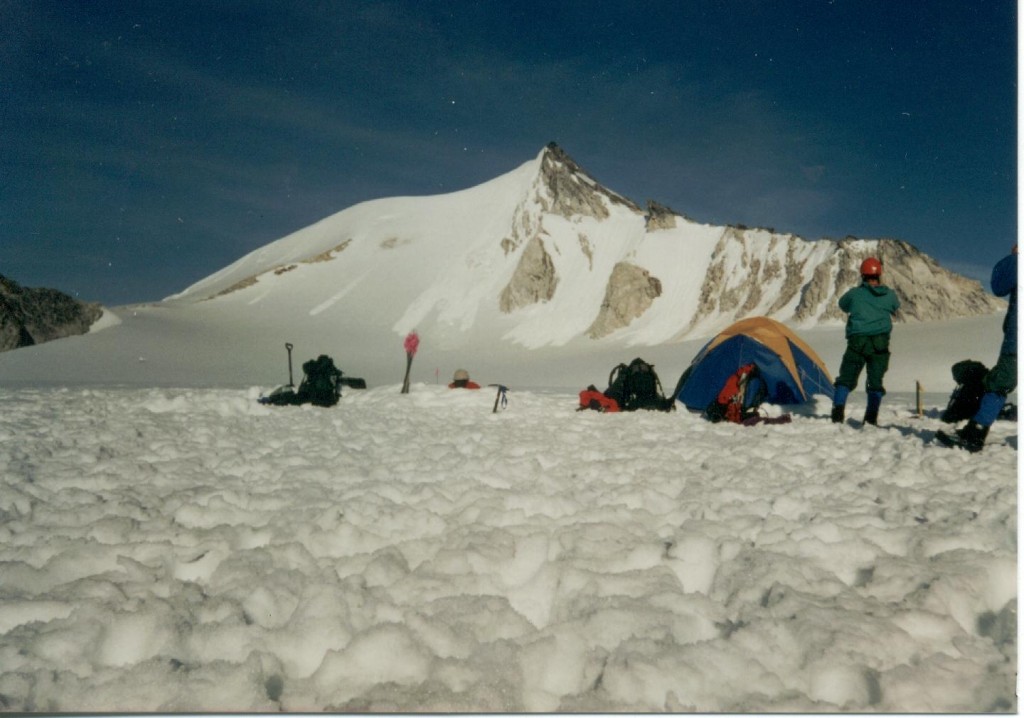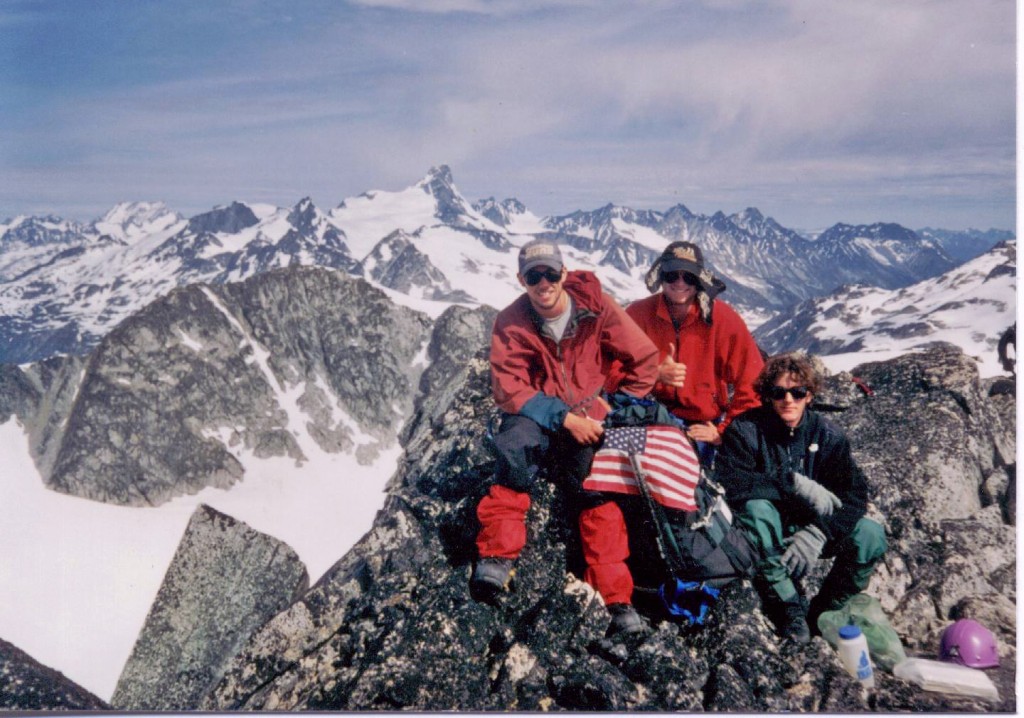We spent the overcast and wet day practicing skills. Placing snow protection, clipping through fixed pro, traveling on a rope team, ice axe use and self arresting. We were at the head of the valley, a small cirque with steep snow covered slopes. Above us lay the Homathko.
I was dressed in the latest in waterproof fashion, a cagoule: a blue, knee length, pullover raincoat made by Kokotat. It covered ¾ of my body. It featured a fleece lined hand warmer pocket. It rocked, I used it for years. My legs sported black wind pants, the ubiquitous gaiters and plastic boots. On my head a black, Peruvian style fleece hat was perched, complimented by aviator-esque glacier glasses.

After the long day was over we gathered for a meeting. It was post dinner, our bellies were full, we were warm and ready for the ol’ dirty sleeping bag. Our course leader, Jon, briefed us for the next day. We were scheduled to make the move up the steep snow, out of the cirque and onto the icefield above. “It is going to be early. It will be a long day. Packs will be heavy, we will move slow, you will be tired. It will probably be raining. Just suck it up.”
Twenty-four hours later all of the words had rang true. Earlier that morning I had elected to go last. Last. That meant I stood around longer in the cold AM dawn. That meant my load got heavier as I went up. That meant I got to clean all the pickets (long, aluminum “stakes” that are buried in the snow to help secure the rope team to the slope.) I thought I would enjoy the challenge. Later, cresting on to the top, those pickets dragging from my already huge and heavy pack, I paused. I turned around to see an empty desolate valley. Just tracks, Bute Inlet, snow, trees and an empty cirque. A feeling of awe washed over me. A feeling of insignificance and aloneness.
I look back now and thick of the moment when I first “discovered” The NOLS. I was a freshman at Unity College in Maine and an outdoor recreation major. The NOLS catalog was perched precariously on the back of the toilet, bending over the edge ever so dangerously as magazines tend to do. I grabbed it to flip through as I sat down. “This is what I want to do this summer” I thought. The next day I called my mother to discuss the possibilities. To this day my mother will say “I knew that when you went out to British Columbia for your NOLS course, I knew I lost you to the west.”
From a bathroom stall to sucking it up and cresting onto the Homathko Icefield to 220 weeks in the field as an instructor has been a long journey. Though I am no longer the same scared 19 year old that dug up and unceremoniously dragged pickets up the headwall, not a lot has changed. I am more jaded now. Older, more experienced, somewhat wiser. But I still have to suck it up. I still have to put in the long days. I still get nervous and anxious before I go into the field. And the wilderness and mountains still make me feel small and insignificant while helping me realize what is important in this world.


[…] On Being a NOLS Instructor […]